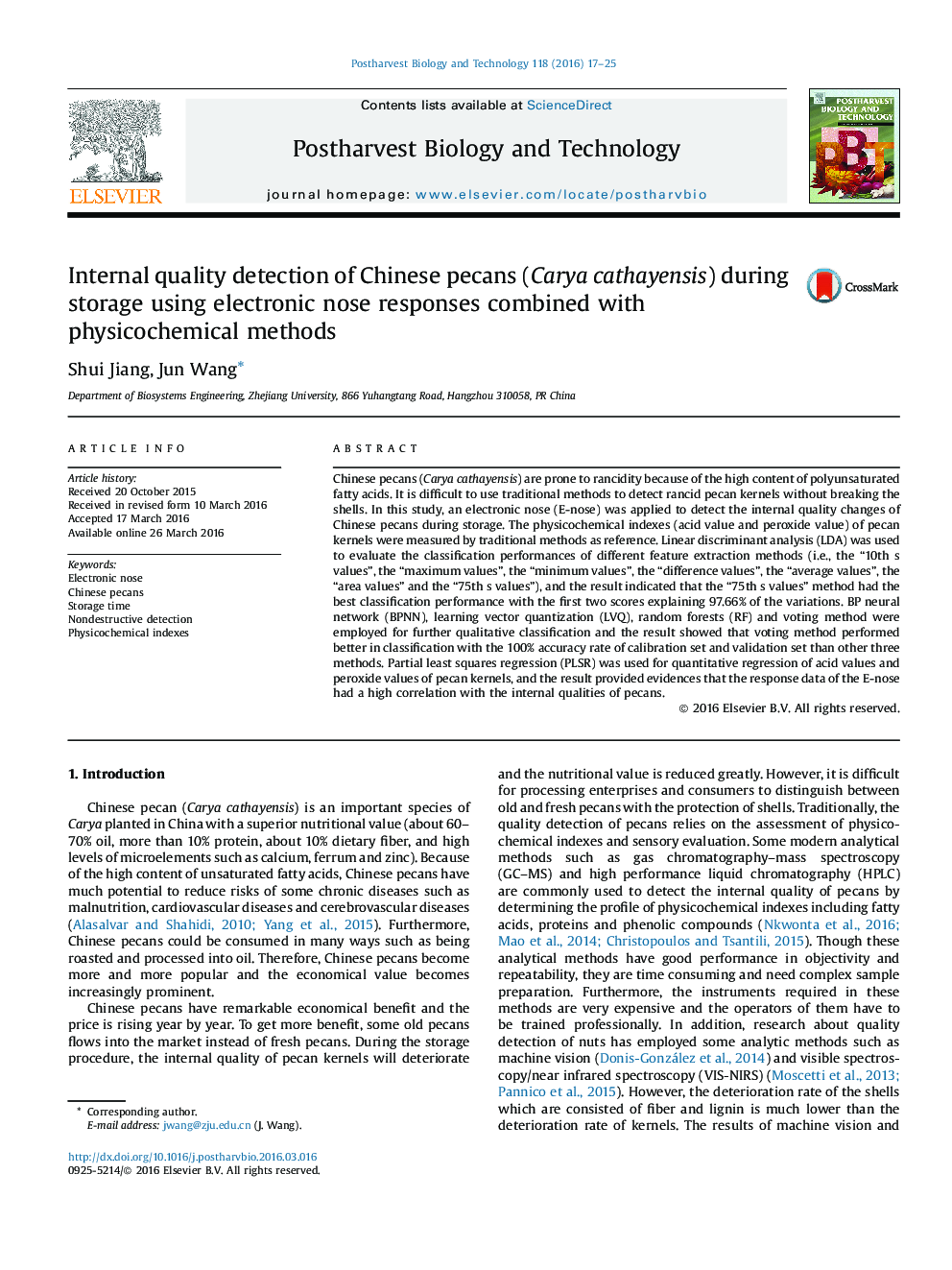| Article ID | Journal | Published Year | Pages | File Type |
|---|---|---|---|---|
| 4517785 | Postharvest Biology and Technology | 2016 | 9 Pages |
•An electronic nose was used to nondestructively detect the quality of Chinese pecans.•The “75th s values” method was used to do the feature extraction of response curves.•The model based on voting method had the best classification performance.•We built two PLSR models to predict the acid and peroxide value of Chinese pecans.•The E-nose signal data had good correlations with the quality of Chinese pecans.
Chinese pecans (Carya cathayensis) are prone to rancidity because of the high content of polyunsaturated fatty acids. It is difficult to use traditional methods to detect rancid pecan kernels without breaking the shells. In this study, an electronic nose (E-nose) was applied to detect the internal quality changes of Chinese pecans during storage. The physicochemical indexes (acid value and peroxide value) of pecan kernels were measured by traditional methods as reference. Linear discriminant analysis (LDA) was used to evaluate the classification performances of different feature extraction methods (i.e., the “10th s values”, the “maximum values”, the “minimum values”, the “difference values”, the “average values”, the “area values” and the “75th s values”), and the result indicated that the “75th s values” method had the best classification performance with the first two scores explaining 97.66% of the variations. BP neural network (BPNN), learning vector quantization (LVQ), random forests (RF) and voting method were employed for further qualitative classification and the result showed that voting method performed better in classification with the 100% accuracy rate of calibration set and validation set than other three methods. Partial least squares regression (PLSR) was used for quantitative regression of acid values and peroxide values of pecan kernels, and the result provided evidences that the response data of the E-nose had a high correlation with the internal qualities of pecans.
